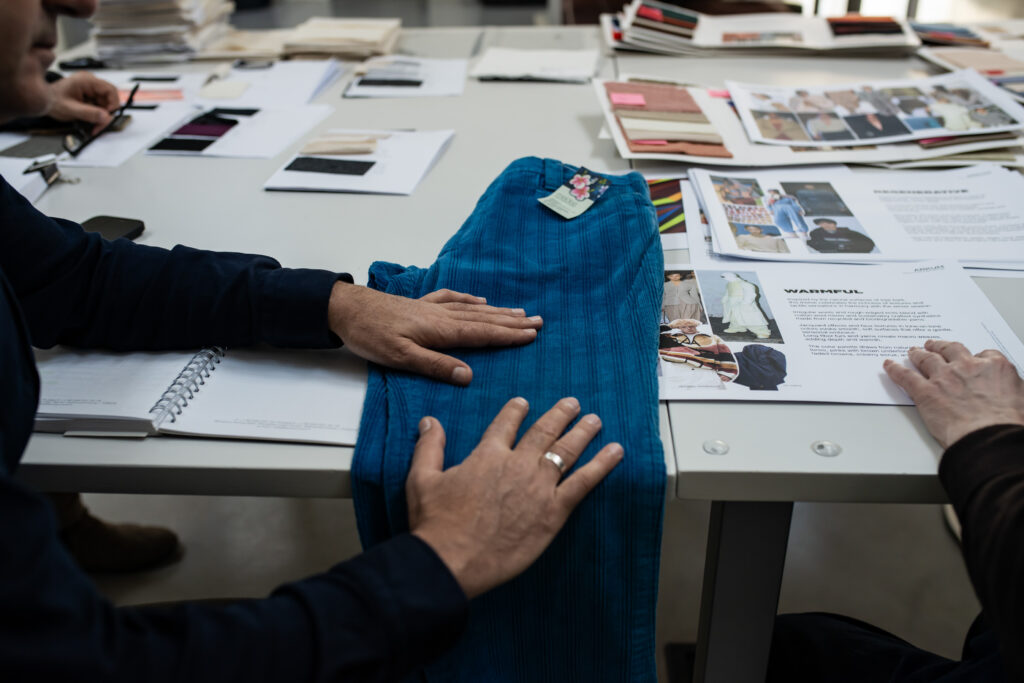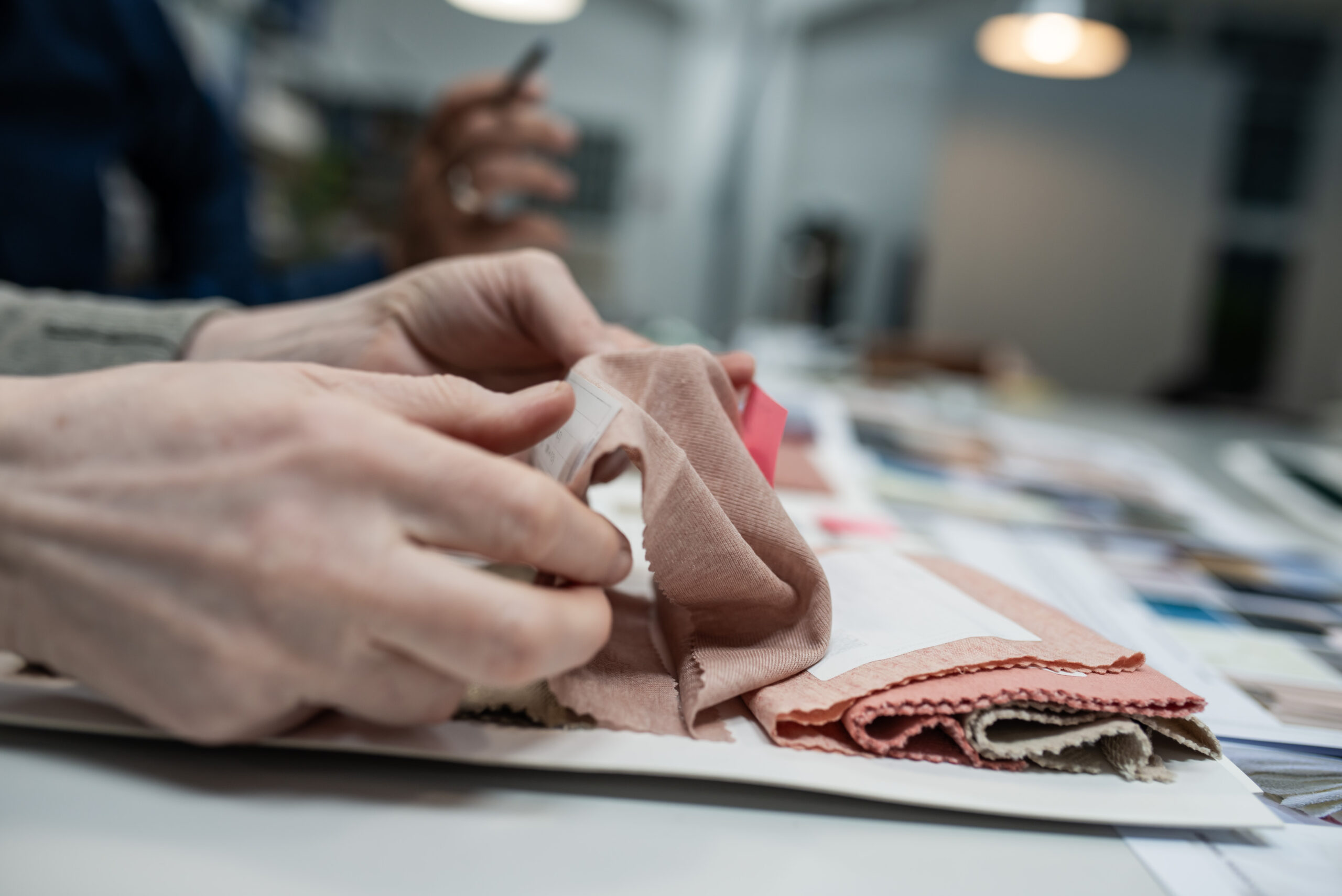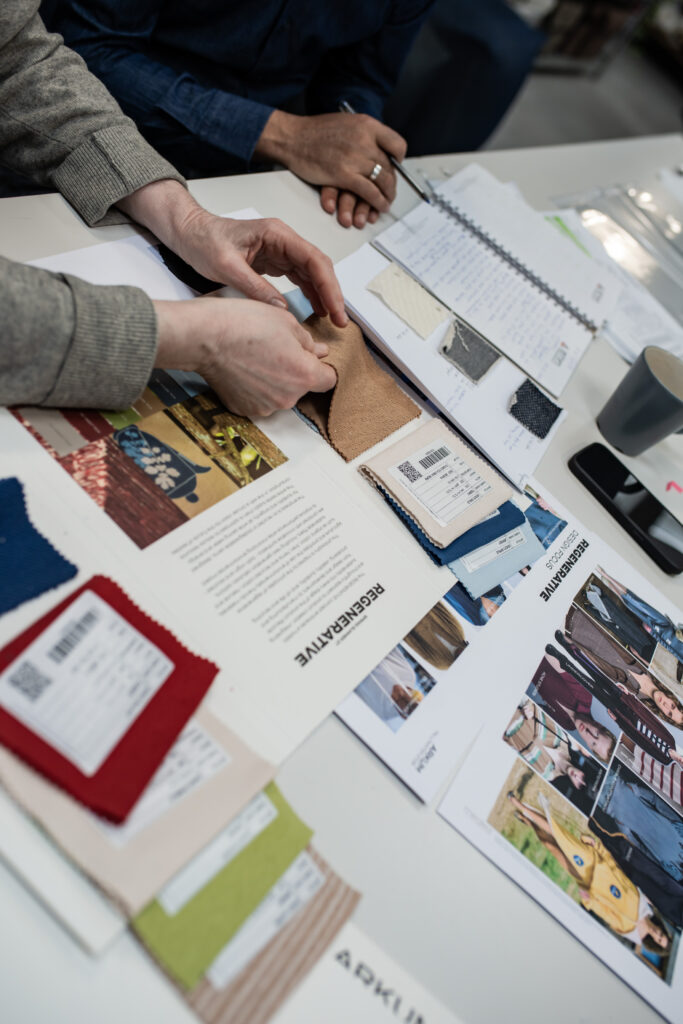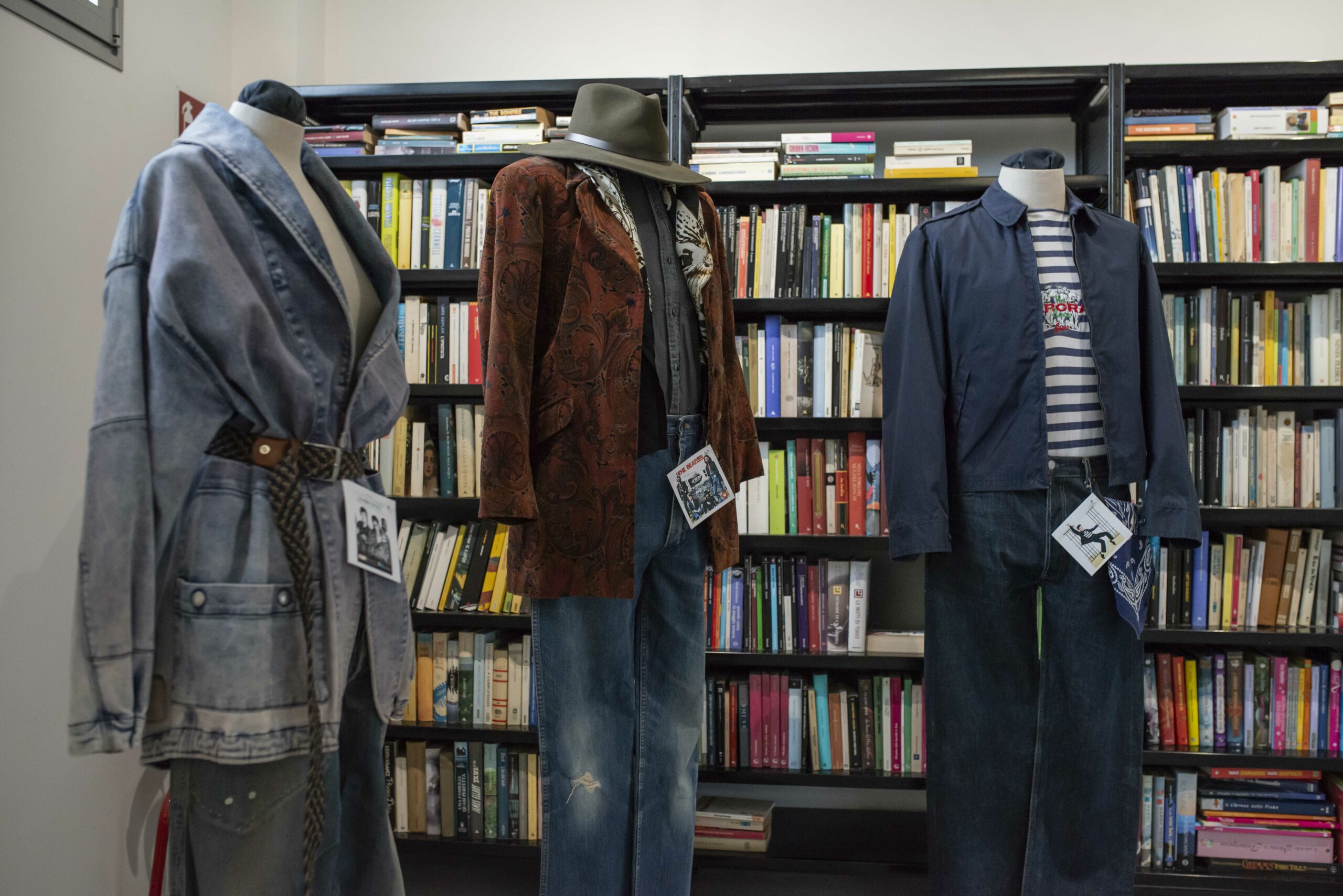Introduction
In fashion and textiles, true quality isn’t just something you see, it’s something you feel. The tactile perception of fabric, known as “hand,” reveals much more than color or decoration ever could. It expresses how fibers interact, how a weave behaves, and how finishing techniques define the final character of the material.
For textile consultants, designers, and materials researchers, developing this sensitivity is essential. It’s a skill that combines craftsmanship, technology, and intuition, allowing us to interpret materials with precision and creativity.
Recognizing fabric quality through touch is more than a technical ability — it’s a philosophy.
It represents respect for the material, awareness of its journey, and commitment to excellence.

Touch as a language of expertise
The art of recognizing fabrics by touch is grounded in years of experience. Every surface, from a compact cotton twill to a fluid jersey, tells a story of structure, tension, and treatment. Through practice and in-depth observation, experts learn to read this tactile language: the elasticity of a yarn, the density of a weave, the softness achieved through finishing, or the resistance that defines durability.
As part of the Meidea Team, we believe this sensorial knowledge represents a strategic advantage. Integrating this sensitivity, acquired over the years, with professional expertise in design, dyeing, and washing, allows us to guide textile manufacturers, laundries, and brands in evaluating fabrics not only for their appearance, but also for their behavior: how they age, react to treatments, and perform in real-life collections.

From fiber to feel: understanding the foundation of quality
Textile quality begins long before the fabric takes shape. It begins with the fiber, the essential ingredient that defines every aspect of the final product.
The type, origin, and processing of yarns influence the feel, drape, and visual appearance. Recognizing this connection helps teams, from designers to engineers, make more informed choices.
This working method, opens the door to innovative and brand-aligned textile solutions, making authentic, non-standardized choices that express both identity, performance, and corporate values.
In our collaborations with international clients such as fabric manufacturers and laundries, this approach has proven essential for creating collections that are not only beautiful but also responsible, combining aesthetics and sustainability.
In our daily work as consultants, we can also apply this tactile sensitivity to market research when exploring shops and vintage markets for sample purchases.
A quality fabric is distinguished by its softness, density, and responsiveness to movement. For example, natural silk feels cool and smooth, but never slippery like synthetic silk. It’s also quiet and lightweight, yet very durable.
The weight of the fabric is also an indicator of durability and value. For example, consider a timeless accessory like a foulard: if it feels too light or flimsy, it’s a sign of poor durability and a cheap product.
When human sensibility meets technology
As the textile industry evolves, digital tools like AI-based fabric analysis and virtual sampling are transforming the way we design and produce materials. Yet, the human sense of touch remains irreplaceable.
Technology can map data, but intuition interprets it. By combining digital innovation with sensory experience, in Meidea we create a balanced approach to developing projects like trend analysis and collection creation: data supports precision, while touch ensures emotion and authenticity, providing the right direction for style and fabric quality, anticipating future customer needs.
This synergy defines textile innovation with a human heart, where progress enhances, rather than replaces, the art of material design.

The value of experience in a visual world
In an age dominated by images, the tactile dimension offers a unique and timeless advantage. Touch connects us to the material world, grounding creativity in something real and tangible.
For our team, this experience has been shaped through more than 20 years of hands-on work: close collaborations with textile engineers, factory visits, participation in international trade fairs, and exploration of production sites where fabrics are not only seen, but also touched, tested, and understood.
It is this direct contact that allows us to guide clients in creating fabrics that don’t just follow trends, but define them.
Are you a brand, a textile company, an industrial technology company, or a laundry looking to take your expertise to the next level?
Our team can support you in the technical and stylistic development in your collection.




